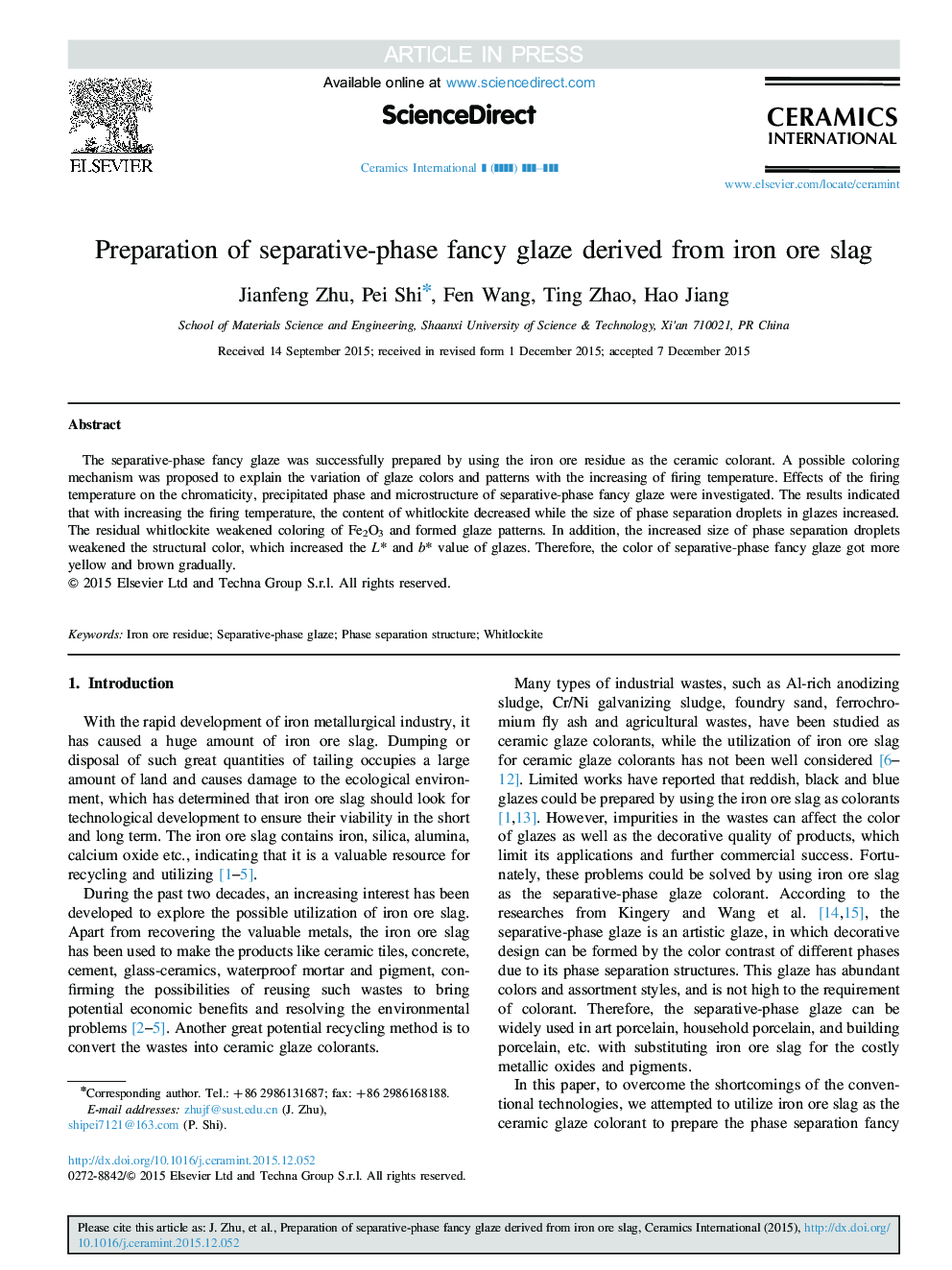| Article ID | Journal | Published Year | Pages | File Type |
|---|---|---|---|---|
| 10624405 | Ceramics International | 2016 | 8 Pages |
Abstract
The separative-phase fancy glaze was successfully prepared by using the iron ore residue as the ceramic colorant. A possible coloring mechanism was proposed to explain the variation of glaze colors and patterns with the increasing of firing temperature. Effects of the firing temperature on the chromaticity, precipitated phase and microstructure of separative-phase fancy glaze were investigated. The results indicated that with increasing the firing temperature, the content of whitlockite decreased while the size of phase separation droplets in glazes increased. The residual whitlockite weakened coloring of Fe2O3 and formed glaze patterns. In addition, the increased size of phase separation droplets weakened the structural color, which increased the L* and b* value of glazes. Therefore, the color of separative-phase fancy glaze got more yellow and brown gradually.
Keywords
Related Topics
Physical Sciences and Engineering
Materials Science
Ceramics and Composites
Authors
Jianfeng Zhu, Pei Shi, Fen Wang, Ting Zhao, Hao Jiang,
